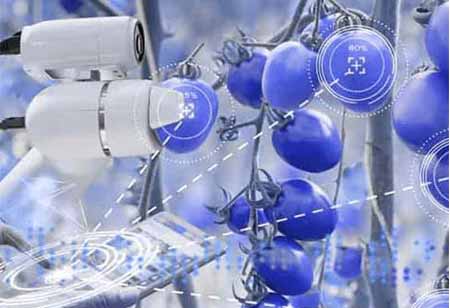Thank you for Subscribing to Agri Business Review Weekly Brief
How to Increasing Farm Yield Using AgTech Solutions
The old logic – applying more fertilizers, more pesticides, more inputs – is no more suitable for the modern farmer,

By
Agri Business Review | Tuesday, July 26, 2022
Stay ahead of the industry with exclusive feature stories on the top companies, expert insights and the latest news delivered straight to your inbox. Subscribe today.
As endless challenges arrive at the farmer's doorstep, many growers are revolving to agricultural technologies such as remote sensing and real-time data analytics to improve their bottom-line and environmental footprint.
FREMONT, CA: The old logic – applying more fertilizers, more pesticides, more inputs – is no more suitable for the modern farmer, who must balance crop generation on the one hand with ecosystem concerns, skyrocketing input prices, and climate variation on the other.
As endless challenges arrive at the farmer's doorstep, many growers are revolving to agricultural technologies such as remote sensing and real-time data analytics to improve their bottom-line and environmental footprint.
Using AgTech to Increase Farm Yield
Yield prediction has always been a tricky business. Still, the seasoned grower is no doubt an expert, understanding that higher returns are a product of several agronomic factors:
Optimal soil conditions
Every crop chooses a particular soil pH, water holding capacity, drainage rate, organic matter content, and more. Therefore, understanding your soil conditions and specific crop needs is essential to growing healthy, productive crops.
Many farmers employ technologies like tillage and drainage tiles to control soil conditions for better yields. Nevertheless, new strategies like IoT soil sensors can provide real-time insight into soil conditions to drive actionable management insights.
Adequate soil nutrients
Plants require adequate nutrients to grow large, produce healthy fruit, maintain a healthy immune system and withstand pests and diseases. Furthermore, some plants like soybeans access nutrients using microbial symbioses, meaning a healthy ecosystem is a precondition for improving nutrient access and driving yields. Farmers make soil nutrients available to plants through fertilizer or tillage strategies, cover crops, or strategic crop rotations. But, of course, every crop has special fertilizer needs at various growth stages, and over-and under-fertilizing and over-tilling have long been risky.
Plants require adequate nutrients to grow large and produce healthy fruit.
Luckily, farmers can now leverage new farm equipment such as tractors equipped with sensors, prescription mapping technology, and variable rate applicators to distribute nutrients, herbicides, pesticides, and other inputs according to soil and plant needs.
Rather than relying on a broad-brush soil test and uniformly applying inputs over a hectare, farmers can now spot soil nutrients meter by meter, applying required nutrients based on geo-maps created by their tractor, satellite, and drones, or farm management software. This, successively, reduces the risk of over and under-fertilizing and improves the sustainability of a farm's operations.
Weather conditions
Today's farmers have more tools than ever to create special microclimates for plants, with greenhouses, hoop-houses, hydroponic systems, and irrigation systems, among many tactics modern growers employ. In addition, new technologies such as in-field sensors monitor various weather indices like temperature, sunlight, relative humidity, and soil moisture, which flow into online dashboards that equip farmers with both historical and real-time data.
Plant genetics
Genetics and seed companies form a large segment of the agriculture industry, providing superior crops adapted to many conditions and bred for traits like higher yields, uniformity, and stress resistance. With huge data to manage, some seed companies utilize digital platforms to manage trials and growers, analyze diversity performance, compare field-by-field and farm-by-farm productivity, and monitor real-time changes in crop maturity to ensure timely seed harvests yields.
With so much data, some seed companies use digital platforms to manage changes in real-time to ensure timely harvests and better yields.
AgTech and Precision Agriculture
As demand for food increases and the availability of arable land dwindles, the significance of new agricultural technologies that increase crop yields while reducing environmental footprint has never been greater. While tech companies have not
perfected harvesting or pruning robots, several precision agriculture technologies are transforming the agriculture industry. From large-scale farms across Asia, Europe, and the US to smallholders in growing countries, from input suppliers to food
processors, from vineyards to product growers, precision technologies can be adapted and scaled to support farmers and operators of all stripes to reduce waste and cut costs.
How Precision Agriculture Increases Crop Yields?
Precision agriculture improves farm systems by addressing variability across fields, soils, and crops. Precision technologies include GPS guidance systems to improve a tractor's steering; variable rate technology and automatic section control to apply pesticides, fertilizers, herbicides, seeds, and other inputs only as needed; in-field and remote sensors that assess plant health and crop needs; yield mapping tools and more. Through sensors to generate unique "management zones" across their fields, farmers can spot the soil or plant requirements when and where it needs them, thus maximizing the effect of their inputs.





